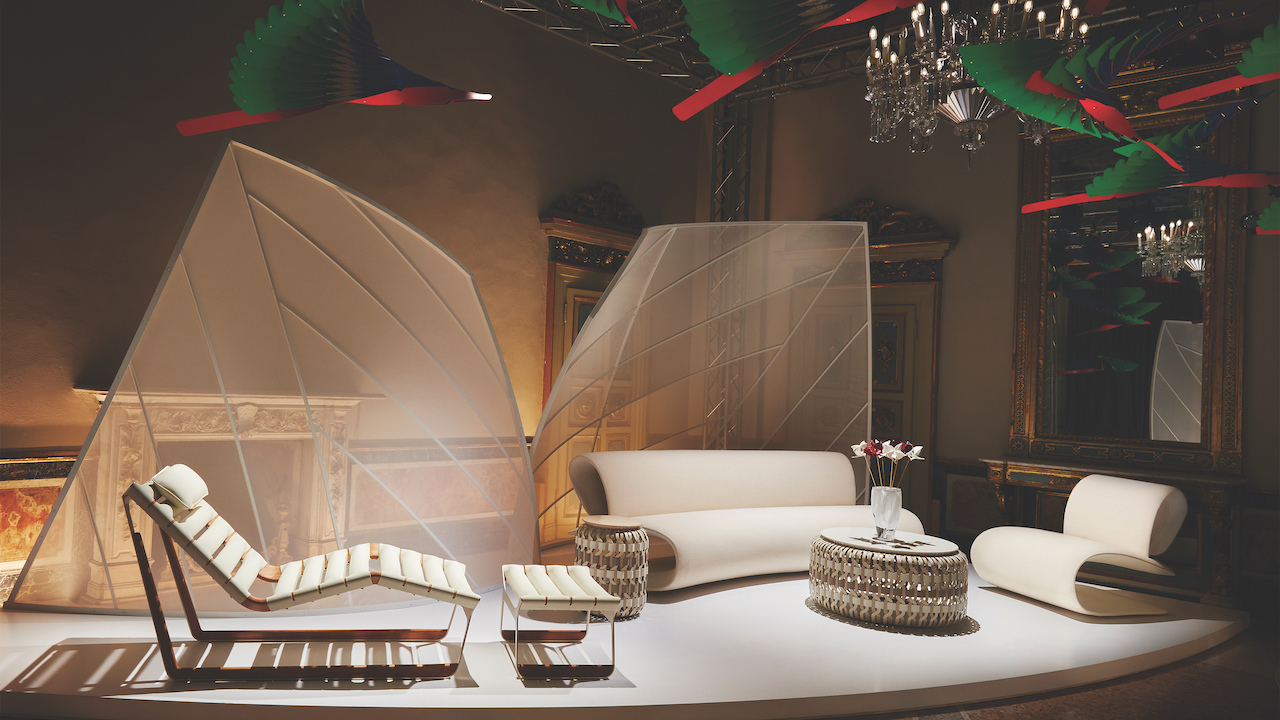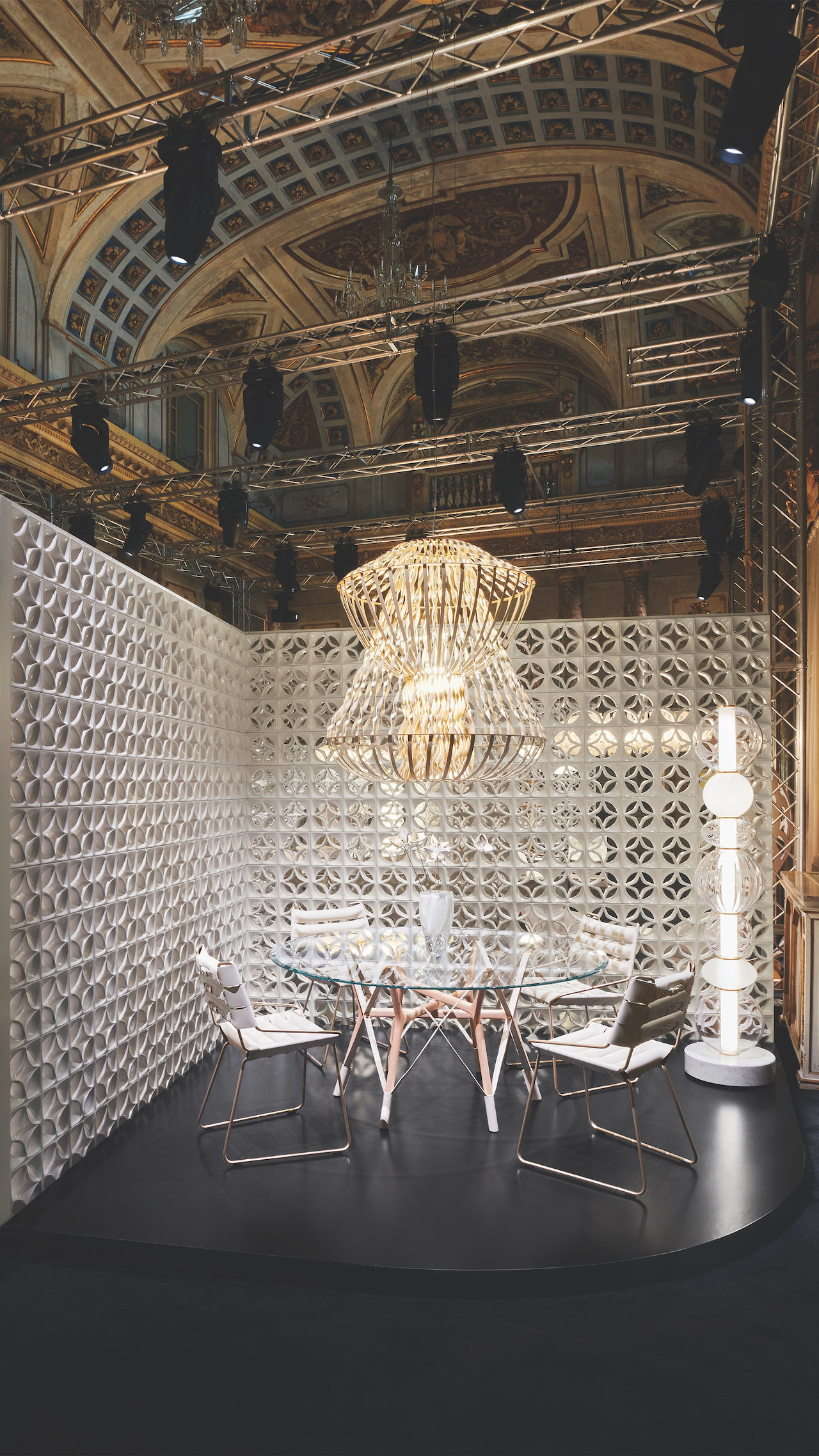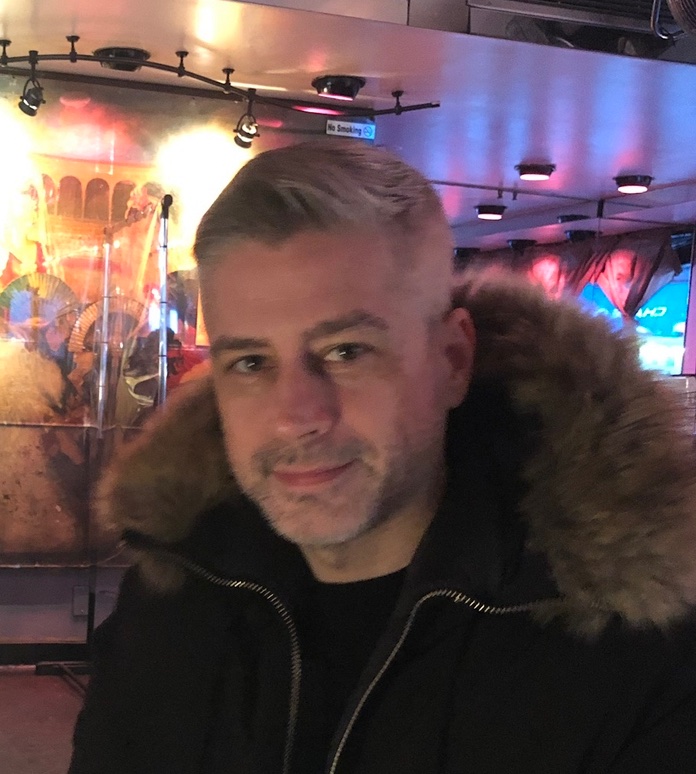
 Venerable design brand Louis Vuitton was founded on travel, and the Maison continues to draw inspiration from around the globe with its special take on the topic: Objets Nomades. Since the collection’s inception in 2012, some of the world’s most renowned designers have imagined more than 70 items that Louis Vuitton’s talented artisans then meticulously bring to life, much to the delight of armchair travelers.
Venerable design brand Louis Vuitton was founded on travel, and the Maison continues to draw inspiration from around the globe with its special take on the topic: Objets Nomades. Since the collection’s inception in 2012, some of the world’s most renowned designers have imagined more than 70 items that Louis Vuitton’s talented artisans then meticulously bring to life, much to the delight of armchair travelers.
This year’s 11 enchanting results from design luminaries — the likes of Barber&Osgerby, Zanellato/Bortotto, Frank Chou, Raw Edges and India Mahdavi, to name a few — were exhibited in Italy this spring at the frescoed 18th-century Palazzo Serbelloni during Milan Design Week. The new pieces presented in Louis Vuitton’s Objets Nomades collection showed the playfully innovative side of the acclaimed French house, and the intricacy of the craftmanship contributed to the feat of setting the exhibition apart from others displaying collectible high-design pieces at Salone del Mobile.
Louis Vuitton initially asked its pioneering contributing Objets Nomades designers — an elite cutting-edge crew that includes Studio Campana, Atelier Oï and Marcel Wanders studio — to explore the ever-evolving concept of travel; and like any expedition, the resultant collection of limited-edition furniture and home décor objects has remained in a constant state of change ever since.
 Just as deciding how to see a destination is a purely personal choice, each designer brings to the endeavor a unique vision and definition of what a permanent “nomadic” object might look like for the home, with the newest designs drawing on everything from the feeling of movement to emotions an object creates within viewers.
Just as deciding how to see a destination is a purely personal choice, each designer brings to the endeavor a unique vision and definition of what a permanent “nomadic” object might look like for the home, with the newest designs drawing on everything from the feeling of movement to emotions an object creates within viewers.
“In the beginning, it seemed like maybe it was going to be a bit of a challenge,” Amsterdam-based Wanders says of the travel theme. “We were not going to make chairs for schlepping around the countryside, but slowly and surely, we were able to find meaning in this nomad concept, and we made things that move and transform and take on second lives.”
 At the exhibition for the newest collection, for example, Wanders floated his undulating Capeline lamps above his Diamond sofa, armchairs and vase. Each pendant light’s wavy tiers of white glass are based on the broad-brimmed summertime hat and appear to be “just in the middle of a dance,” Wanders says.
At the exhibition for the newest collection, for example, Wanders floated his undulating Capeline lamps above his Diamond sofa, armchairs and vase. Each pendant light’s wavy tiers of white glass are based on the broad-brimmed summertime hat and appear to be “just in the middle of a dance,” Wanders says.
The lamps aren’t a literal take on the concept of travel and mobility. For Wanders, the meaning behind his Objets Nomades pieces goes much deeper. Rather than something that relates to physically exploring distant lands, he sees his creations as collectibles meant to be passed down to others. “Vuitton wants to make things that last ages,” he says. “One day you’ll give it to your kids, or someone else will buy it from you. The pieces are time travelers.”
 São Paulo-based contemporary furniture designer Humberto Campana of Studio Campana can relate to the concept of time travel. He and his late brother, Fernando Campana, created one of their most iconic creations, Cocoon, a perforated egg-shaped hanging chair, at the start of their Louis Vuitton collaboration 11 years ago — and it’s continued to be a showstopper ever since. This year, Campana’s point of view was reflected in a metallic version of the chair that’s covered with a mosaic of 10,000 mirrored tiles.
São Paulo-based contemporary furniture designer Humberto Campana of Studio Campana can relate to the concept of time travel. He and his late brother, Fernando Campana, created one of their most iconic creations, Cocoon, a perforated egg-shaped hanging chair, at the start of their Louis Vuitton collaboration 11 years ago — and it’s continued to be a showstopper ever since. This year, Campana’s point of view was reflected in a metallic version of the chair that’s covered with a mosaic of 10,000 mirrored tiles.
Campana explains the pilgrimage from concept to finished product is one that Objets Nomades designers embark on with Louis Vuitton’s masterful artisans by their side. “It’s very organic, like children playing,” he says of the back-and-forth interaction during the first stages of the process to nourish the seeds of design ideas. “Things start to grow, and maybe the artisans can see another solution, or better use of an object, like transforming a fruit bowl into a huge armchair. It’s really inspiring working with them.”
The self-taught Brazilian designer appreciates how the brand realizes his pieces are a metaphoric invitation to travel to a “surreal world, one of dreams.” He adds, “I make bridges between art and design, and I love having the freedom not to get stuck in a solution of functionality. This is good because Louis Vuitton understands my process of taking people to imaginary worlds.”
 While Campana works in the surreal, the Swiss studio Atelier Oï — made up of Aurel Aebi, Armand Louis and Patrick Reymond — grounds work in the designers’ love for materials and the emotions produced when they stretch these elements to the limit. The new collection premiered stackable origami bowls made with a single piece of slotted and folded leather designed to hold travel souvenirs and other mementos while simultaneously evoking a Japanese adventure.
While Campana works in the surreal, the Swiss studio Atelier Oï — made up of Aurel Aebi, Armand Louis and Patrick Reymond — grounds work in the designers’ love for materials and the emotions produced when they stretch these elements to the limit. The new collection premiered stackable origami bowls made with a single piece of slotted and folded leather designed to hold travel souvenirs and other mementos while simultaneously evoking a Japanese adventure.
And Quetzal — a lighthearted decorative mobile crafted in 14 bold blue, red and green leather “feathers” — was inspired by the plumage of the South American bird of the same name. “You can imagine being in the middle of Brazil” while looking at this piece, Aebi explains. “The objects inspire you to think about the rainforest.”
 Even the studio’s Serpentine table, with its glass top and leather straps binding the base and legs, evokes the feeling that those sitting at it are attached and traveling together, in a sense, as they take a moment to share the events of their day.
Even the studio’s Serpentine table, with its glass top and leather straps binding the base and legs, evokes the feeling that those sitting at it are attached and traveling together, in a sense, as they take a moment to share the events of their day.
“When you look through the table, you can feel that — that you are connected to all the persons around the table,” Aebi says. “In design, you often say form follows function and not form follows emotion. But you need that emotion, and all these pieces make you travel in your mind.”
Read GRAZIA USA’s Summer issue featuring cover star Priyanka Chopra Jonas:














